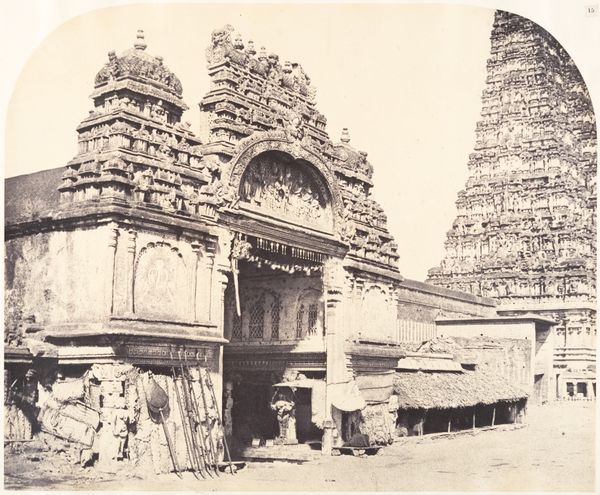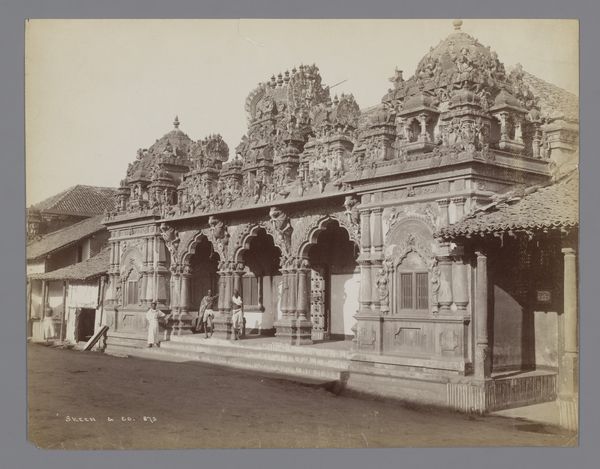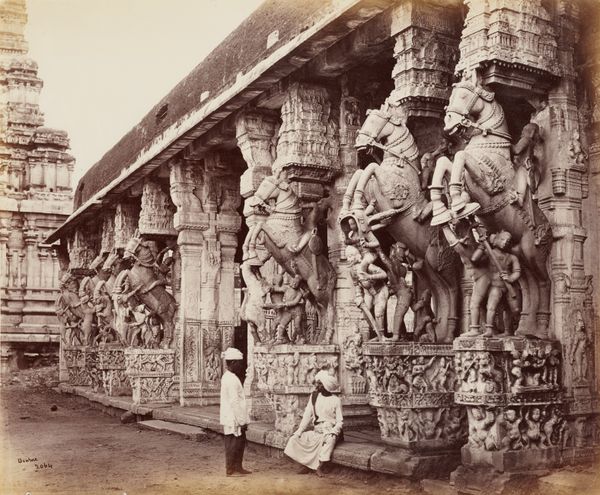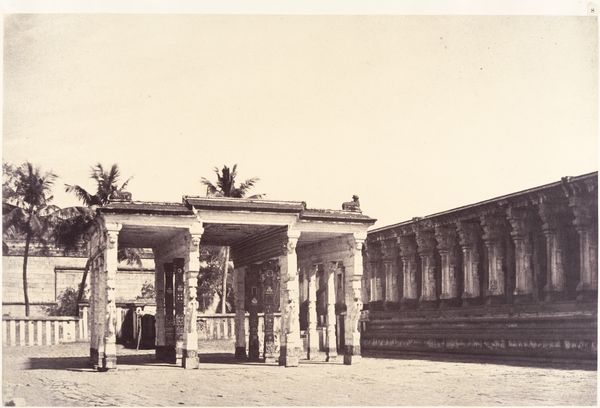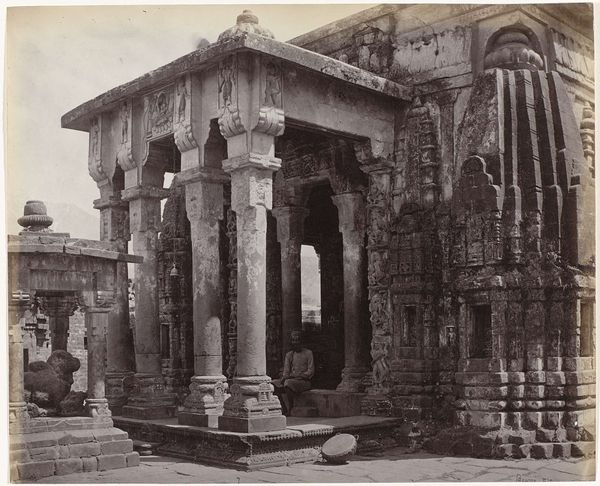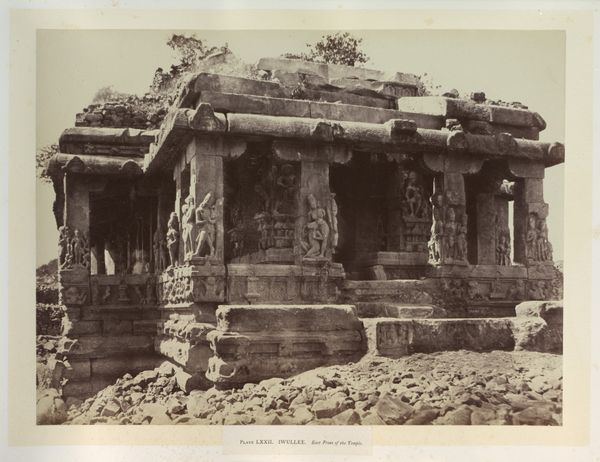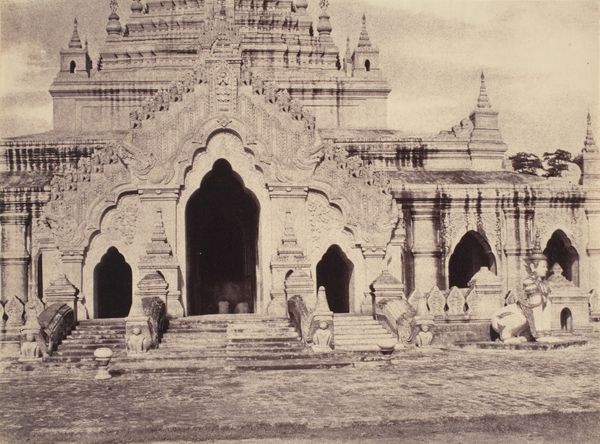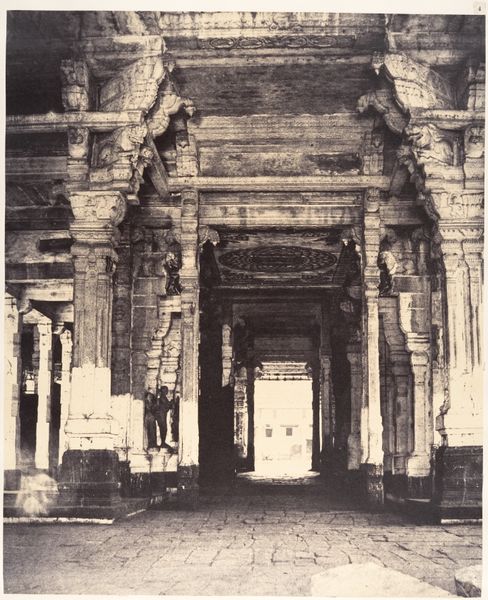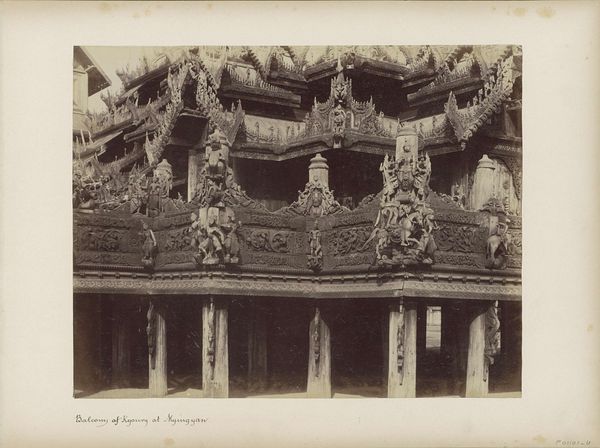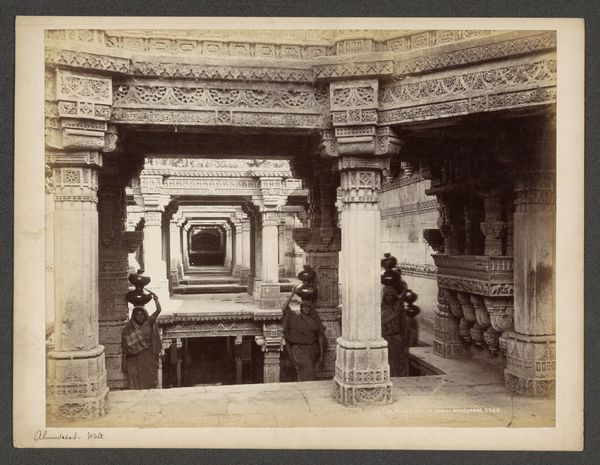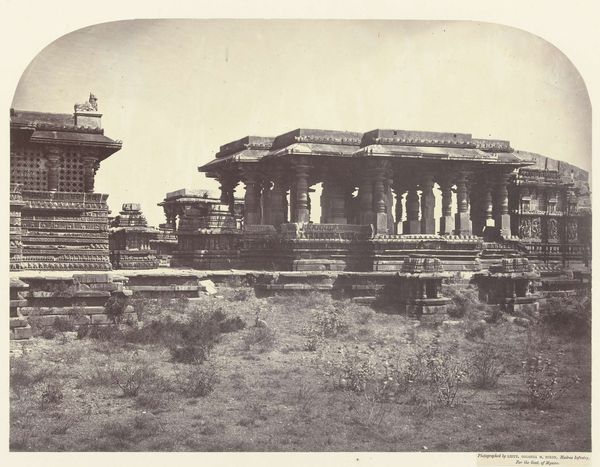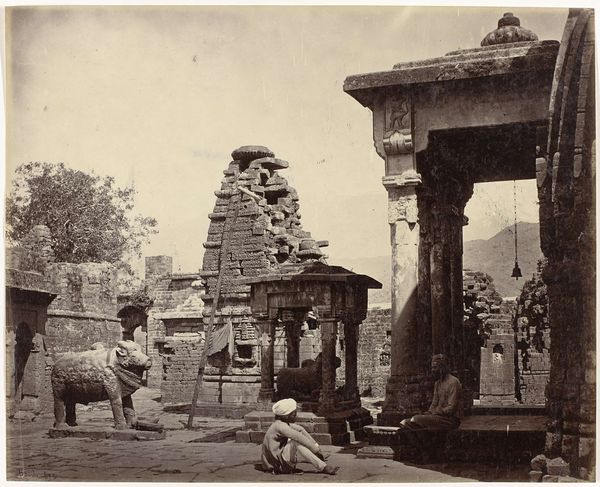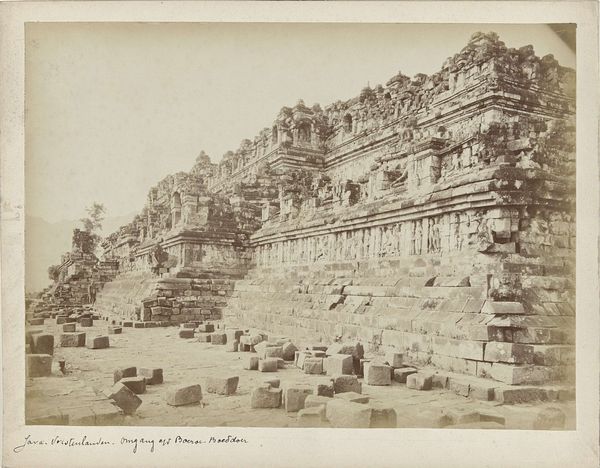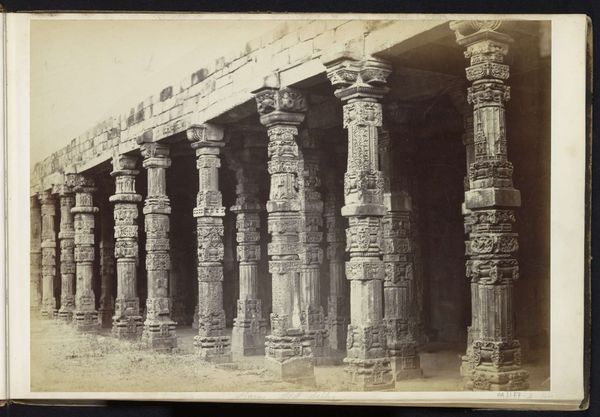
photography, site-specific, albumen-print, architecture
#
asian-art
#
landscape
#
photography
#
ancient-mediterranean
#
orientalism
#
site-specific
#
indian
#
albumen-print
#
architecture
Dimensions: height 2390 mm, width 361 mm, height 418 mm, width 538 mm
Copyright: Rijks Museum: Open Domain
Curator: This albumen print, dating back to 1865, presents Henry Dixon's photographic study of the "Tempel van Venkataramanaswami in Madhugiri, India," now held in the Rijksmuseum collection. Editor: The density of the temple's structure is instantly striking. It feels monumental and otherworldly, shrouded in history. The tonal range achieved through the albumen process also imbues it with an aged, almost sepia-toned, elegance. Curator: Dixon’s image is fascinating when contextualized within the British colonial presence in India during the 19th century. It speaks to Orientalism, a Western fascination and interpretation, but also a power dynamic that we cannot ignore. These photographs served to document, to study, and in some ways, to possess visually. Editor: Absolutely. And examining this from a postcolonial perspective, the inclusion of a figure dressed in traditional garb serves as a reminder of the lived realities and inherent power imbalances. How was this person positioned? What was the relationship to the photographer at the time this photograph was taken? The individual humanizes the frame, but is their story told or erased? Curator: The architectural details also offer a look into cultural interactions. The elaborate carvings on the temple juxtapose with the stark, structural pillars suggesting that perhaps Dixon wasn’t simply presenting an exotic other, but trying to highlight design. Still, these decisions about focus, angle, and inclusion create a distinct narrative. Editor: Indeed. By understanding this photo as a deliberate construction of image, we are invited to critique. Consider who this image was for at the time of production? What purpose did the visual record serve back then, and what narratives continue today? What impact will this photography have in the present day? Curator: It’s through these lines of inquiry that the work’s complexity really becomes clear. Editor: Precisely! Viewing photography through a modern lens demands attention to history.
Comments
No comments
Be the first to comment and join the conversation on the ultimate creative platform.
